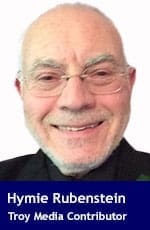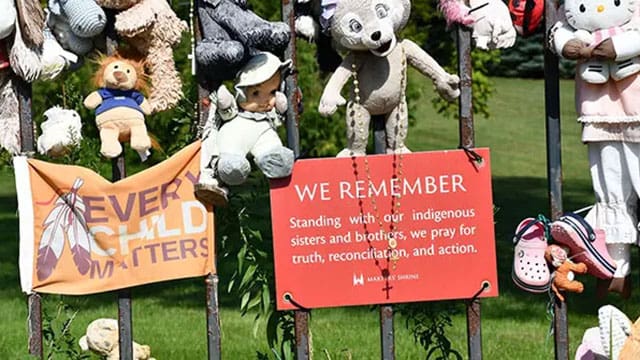The falsehoods and exaggerations in the Report on Aboriginal Residential Schools persist in mainstream society
 As expected from its pre-release sound bites, the May 2015 Summary of the Final Report of the Truth and Reconciliation Commission of Canada on the history, operation and legacy of the Indian Residential Schools reinforced the many half-truths, exaggerations and selective reporting about the schools and their mission.
As expected from its pre-release sound bites, the May 2015 Summary of the Final Report of the Truth and Reconciliation Commission of Canada on the history, operation and legacy of the Indian Residential Schools reinforced the many half-truths, exaggerations and selective reporting about the schools and their mission.
Nine years later, these distortions and omissions remain embedded more than ever in mainstream society. That’s reason enough to revisit some of them.
The most incendiary and least credible assertion by the Commission’s chair, former Judge Murray Sinclair, is that the 150,000 children who attended these Church-run schools between 1849 and 1996 were considered “sub-human,” a claim belied by their very raison-d’être: to give aboriginal children a chance to acquire the knowledge and skills needed to cope with and fully benefit from membership in the new country of Canada.
Was this an ethnocentric goal? Absolutely. So was the goal of educating the children of millions of disadvantaged immigrants who migrated to Canada during the same period, resulting in the same partial assimilation despairingly called “cultural genocide” that has occurred around the world since the origin of human beings.
 |
| Related Stories |
| Catholic Church finally repudiates the Doctrine of Discovery
|
| The genocide lie about residential schools
|
| Improve Indigenous lives by looking forward
|
Regardless of the parliamentary rhetoric 150 years ago about “taking the Indian out of the child,” the primary function of formal education, especially in complex multi-ethnic societies like Canada, has always been to teach mainstream norms and practices. State education has been compulsory for decades, and the children of non-British residents, native and non-native alike, have always undergone considerable cultural loss (“taking the Swede/Ukrainian/Jew out of the child”) by attending government-mandated schools while still managing to retain many old country beliefs, customs, and languages.
The Commission understood that the provision of native education was a right requested by Aboriginals and entrenched in the treaties they signed giving up their sovereignty. Without residential schools, the nomadic hunting-and-gathering lifestyle, remote location, and tiny size of many aboriginal groups would have resulted in no formal education. This fact was clearly understood by all at the time.
Conversely, there is evidence that the 70 percent of Aboriginal people and their descendants who never attended residential schools exhibit the same or worse socio-economic outcomes and pathologies as those who did.
That severe corporal punishment was often routinely doled out at these schools cannot be denied, based on the reports of former students and the fact that as alien as its practice may seem by today’s anti-discipline standards, strapping and caning were the order of the day in most non-native parochial schools up to the 1960s. All too often, so was the vile act of child sex abuse, a crime that must be pursued and punished, even though it involved mainly student-on-student abuse in the residential schools.
Research has shown that of the thousands of Indian Residential School workers living in the schools during the system’s entire 113-year government-funded existence, only 15 were found guilty of sexual abuse, including a lone Catholic priest.
Compared to intra-Indigenous sexual abuse occurring both on and off Aboriginal reserves, this is a very low figure.
It is also important to qualify and contextualize the Aboriginal residential schools in other ways as well. Up to the late 1960s, it was quite common for children and adolescents of various ethnicities to be sent to languish in large institutions – general hospitals, sanatoria, orphanages, reform schools, homes for unwed mothers, mental institutions, and boarding schools for long periods and to be treated in ways that seem inhumane by today’s standards.
Loneliness, sexual and physical exploitation, and harsh living conditions have been reported as well by the children of wealthy parents forced to attend elite boarding schools throughout the former British Empire.
When we call all aboriginal children educated in residential schools “survivors,” this erroneously implies that they are equivalent to Holocaust survivors. This libel also denigrates the sacrifices made by the many caring Christian teachers, religious leaders, and other school personnel who devoted years of service trying to enhance the life chances of their young charges, thousands of whom have benefited from their residential school experience to become productive and influential figures in Canadian society and role models for their people.
That few of these successful former students chose to give testimony before Judge Sinclair should come as no surprise.
Hymie Rubenstein is a retired professor of anthropology at the University of Manitoba and the editor of REAL Indigenous Report.
For interview requests, click here.
The opinions expressed by our columnists and contributors are theirs alone and do not inherently or expressly reflect the views of our publication.
© Troy Media
Troy Media is an editorial content provider to media outlets and its own hosted community news outlets across Canada.

